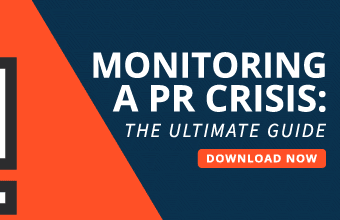Despite the best efforts of PR practitioners to help clients during a crisis with a by-the-book, supposedly proven crisis plan, history shows four realities:
- Clients want negative news stories stopped, but crisis PR pros have no control of the press and negative stories will continue until the media decides there is no longer relevant news to report.
- Despite the much ballyhooed stakeholders outreach facet of the crisis plan, there is scant evidence of it helping a company in crisis because most people get their news from the media, which updates reports several times a day.
- Shares of public companies will decline when negative news about a crisis is reported and there is little that can be done to prevent it from happening.
- The fourth point is about one of the biggest mistakes an account team can make, in my opinion. It is to relinquish complete control of a crisis to a PR crisis team. The account team must have major input into any plan to ensure that the client’s priorities are not damaged and can be revived when the crisis subsides.
It is important for PR people to remember that articles about past PR crises can be revived by the media at any time, but if a negative article about a past crisis appears it doesn’t mean that a new crisis has developed. The majority of negative stories about past crises will be short lived and will probably be forgotten shortly after they appear. My advice has been not to respond to one negative story. Doing so might lead to another. However, sometime a client will insist on replying to one negative story. In that case, a good reply to the reporter is, “That problem has been fixed a long time ago. How about speaking to someone who can discuss how the situation has changed. and what we are doing now.”
Of course, a true media crisis needs to be addressed. In that case, it’s important to remember that every crisis deserves new thinking that relates to the current situation because there is no one size fits all PR crisis plan, as I have preached for decades.
Even though many self-designated PR crisis specialists recommend an immediate response to reporters’ questions after a crisis develops, I don’t
I believe it’s best to wait for a day or two until all the facts are evaluated. That’s because disseminating information before the facts have been verified invariably will lead to correcting wrong information, resulting in additional negative coverage. “We’re gathering information and will get back to you as soon as we can verify the facts,” should be the first reply to reporters; immediately after a crisis. If the crisis involves deaths, the initial statement must also contain words of sympathy.
Below is a checklist that I’ve developed that should be considered by a company prior to, during, or after a crisis.
- Instruct employees to discuss sensitive matters one-on-one, not by phone or email.
- Never try to hide a problem or hope it’ll go away. Try to solve it before it mushrooms into a media crisis situation.
- When speaking to the media, always tell the complete truth. It’ll come out anyway.
- Don’t be intimated when speaking to the media. Act self assured, but not arrogant.
- Never answer a question with a “no comment.” Explain why you can’t answer the question.
- Don’t answer “what if” questions.
- Reply immediately to rumors, but only to the rumor.
- Don’t let yourself become victimized by a media feeding frenzy. If the crisis is of long duration, don’t let news trickle out. Hold news conferences every two weeks or sooner if news starts to leak. This will permit the crisis team, which should include attorneys, to learn which questions are most likely to be continually asked by reporters; it will help your corporate team prepare for future media questions. Statements on other days can be posted on the website. (Additional press conferences can always be added for important breaking news.)
- Transcribe questions and answers from the press conferences or any other engagement with media; use the questions to prepare answers if the same questions are asked again, which is not unusual in a protracted crisis.
- Don’t hide your CEO. He should appear at the initial press conference and also at subsequent ones, but only when significant news will be released. But remember. It is not necessary to have the CEO be the prime crisis response communicator. That role should be filled by an individual most knowledgeable of what caused the crisis.
- Always have a prepared statement for media distribution at press conferences; also post it on a website.
- Just as you should have a crisis communication prototype plan and team in place, you should also have a “prepare the damage” team with preliminary plans that can be implemented as soon as the crisis is resolved. Of course, these plans are initial drafts that must be filled in with actions relating to the crisis.
- Don’t play the “good guy” and acquiesce to every request for an interview. It will help the reporter, but will not do you any good.
- Treat reporters with respect. They are not your enemies, but remember, they are not your friends, either.
- Don’t play the blame game. It only provides additional ammunition for reporters.
- Just as it is necessary to have a policy manual, create an email manual detailing what company information can and cannot be e-mailed. (A recent example of why this should be standard operating procedure was the January 9, 2020, stories in the New York Times, Wall Street Journal, Washington Post and other pubs that detailed emails and instant messaging from Boeing employees bragging about convincing the Federal Aviation Administration to approve the 737 Max and concealing information from the F.A.A. while saying they wouldn’t permit their families to fly on the plane.)
It’s very important that when crafting any PR program to research the client’s history to make certain that nothing you suggest will generate negative coverage because of a past problem.
Account personnel who work on a client that has had a past crisis must always remember that a crisis becomes part of the client’s DNA, remaining there forever, and can become the subject of stories at any time. They must always be prepared for such a situation.
For many years, a well-known national account had an on-going PR crisis. When I was asked to manage the account, I changed the strategy. A tactic that I used with great success was to create a pro-active publicity campaign using third party spokespeople. The media coverage always contained references to the crisis, but importantly the new strategy resulted in massive positive coverage, always including the client’s position, that continued for years, until the client decided to go in another direction.
I used a different technique for an international client with a media crisis. Round table discussions with the client with selected media was the tool.
The above techniques are not viable for every crisis
But the above is in keeping with my long-held belief that there is no one size fits all solution to a crisis and that every crisis needs original thinking.
But no matter what the situation is or how many years have past since a crisis, PR people should remember that a crisis becomes embedded in a client’s DNA and can be revived by the media at any time. A prime example was in a New York Times article on March 6, 2020, about Jamie Dimon, the chairman and chief executive of JP Morgan Chase undergoing emergency heart surgery. The article included, “The bank has also paid tens of billions of dollars in fines for transgressions like mortgage lending abuses and weak controls against money laundering.”
The above graph proves another lesson that PR people should remember when dealing with the media: Reporters aren’t impressed with the title of a client. In fact, the higher a person’s title, the more likely it is that past negative information is likely to be included in a current article. And there’s nothing a PR person can do to prevent it.
So never tell a client that you can prevent bad news from being reported. If you do, you’ll not only have an unhappy client but one who know longer trusts your judgment.
And remember: A PR crisis is not a garment. There is no one size fits all solution. Every crisis needs new thinking.








